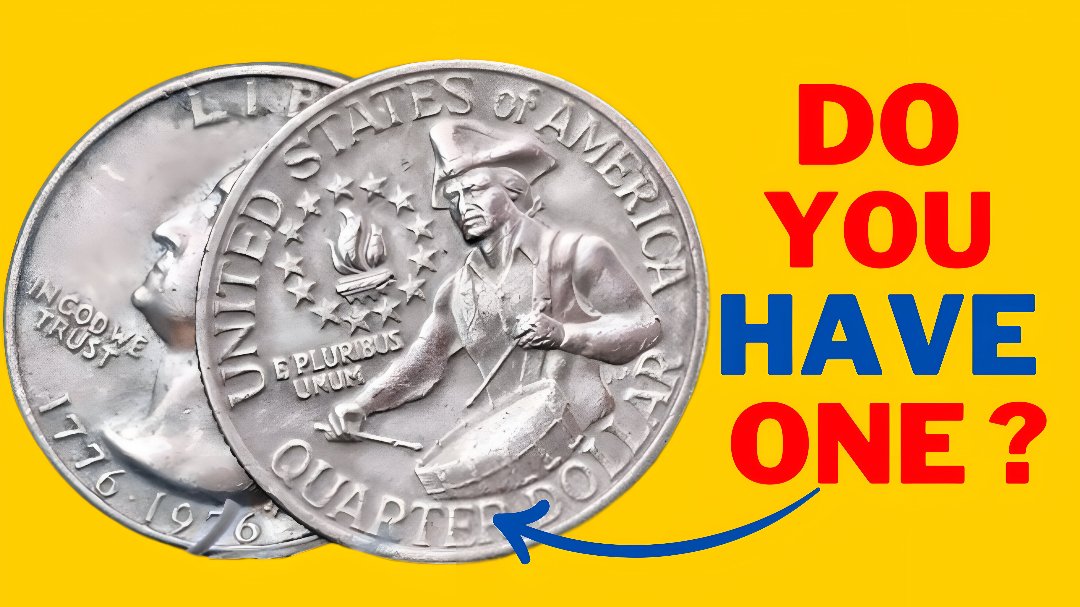Rare Bicentennial Quarter : Imagine pulling a quarter from your change only to realize it might be worth more than most cars — or even your house. That’s the legend swirling around the rare Bicentennial quarter, a coin minted to celebrate America’s 200th birthday and now rumored to be worth up to $11 million. But is it true? Could such a valuable coin really still be in circulation?
Let’s explore the facts, the myths, and why this historic coin has become one of the most talked-about topics in the numismatic world.
What Is the Bicentennial Quarter?
In 1976, the U.S. Mint released a special edition quarter to commemorate the nation’s Bicentennial. These quarters are easy to identify: instead of the usual eagle, the reverse side features a Colonial drummer and a torch encircled by 13 stars. The date on the coin reads “1776–1976” to honor the 200th anniversary of American independence.
Over 1.6 billion Bicentennial quarters were minted, making them common in everyday circulation — and, under normal circumstances, worth just 25 cents.
So Where Does the $11 Million Valuation Come From?
The $11 million Bicentennial quarter isn’t your average commemorative coin. The coin in question is extremely rare due to a unique minting error, specific composition, or possibly even a test strike — a prototype not intended for general release.
Here’s what sets it apart:
-
Struck on a 90% silver planchet instead of the standard copper-nickel clad.
-
Proof or specimen quality, with ultra-sharp details and a mirror-like finish.
-
Possibly a wrong planchet error (a quarter mistakenly struck using a planchet meant for another denomination).
-
Graded MS70 or PR70 (perfect grade) by professional grading services like PCGS or NGC.
While no publicly documented sale has reached $11 million, rumors and collector speculation suggest that one-of-a-kind examples, especially error coins or prototypes, could command this kind of price in a private sale to the right buyer.
Could One Still Be in Circulation?
Technically, yes — but it’s extremely unlikely.
Most of the valuable Bicentennial quarters have been:
-
Pulled from circulation long ago
-
Certified and stored in private collections or museums
-
Traded in numismatic auctions or coin shows
That said, coin roll hunters and change-checkers still dream of stumbling upon an overlooked gem. Rare coins have shown up in piggy banks, estate sales, or dusty coffee cans. So while it’s improbable, it’s not impossible.
How to Spot a Valuable Bicentennial Quarter
While most are only worth face value, here’s what to look for in potentially valuable versions:
-
Silver Content: Check for quarters from 1976 proof or special mint sets — some were struck in 40% silver. These carry more value.
-
Mint Mark: Look for an “S” mintmark (San Francisco). These were usually proofs and may be more valuable.
-
Error Coins: Misstrikes, double dies, off-center strikes, or coins struck on the wrong planchet are worth far more.
-
Condition: Uncirculated or graded quarters in MS65+ or PR69/70 condition fetch a premium.
Recent Market Values
While the $11 million figure is largely legendary, real high-value Bicentennial quarters have sold for thousands:
-
A 1976-S silver proof quarter (PR70DCAM) has sold for over $4,000.
-
Error Bicentennial quarters have fetched $1,000 to $5,000 depending on type and grade.
-
Unique specimens (especially if unconfirmed or privately held) could command even more.
Final Thoughts: Myth or Million-Dollar Opportunity?
The rare Bicentennial quarter valued at $11 million remains a fascinating mystery. Whether it’s fact, fiction, or a mix of both, one thing is certain: this iconic coin has reignited passion in both seasoned collectors and everyday Americans.
So next time you get change from the gas station or dig through your coin jar, take a closer look. That shiny 1976 quarter could be just another piece of history — or, just maybe, a life-changing discovery hiding in plain sight.
Tip: If you believe you’ve found a rare Bicentennial quarter, don’t clean it. Instead, get it evaluated by a reputable coin grading service to determine its true worth.
Rare Bicentennial Quarter Frequently Asked Questions (FAQs..)
1. What is a Bicentennial quarter?
The Bicentennial quarter was minted in 1975 and 1976 to commemorate the 200th anniversary of the United States. It features the dual date “1776–1976” on the front and a Colonial drummer with a torch and 13 stars on the reverse.
2. Are all Bicentennial quarters valuable?
No. Most Bicentennial quarters were minted in large numbers and are worth face value (25 cents). Only specific versions — such as silver proofs, rare errors, or prototype strikes — carry significant value.
3. Why is one Bicentennial quarter said to be worth $11 million?
This value is associated with a highly rare or possibly one-of-a-kind error or prototype — such as:
-
A quarter struck on a silver planchet by mistake
-
A wrong planchet (used for another coin)
-
A specimen-grade strike with perfect condition
-
A privately traded or rumored coin of exceptional rarity
Though no public sale has confirmed this exact price, speculative value can skyrocket in private collector circles.
